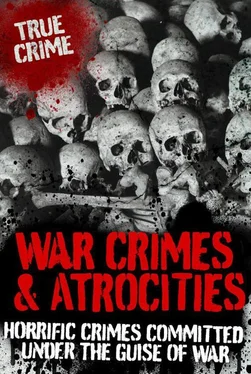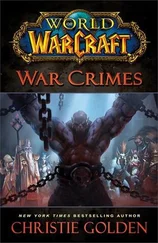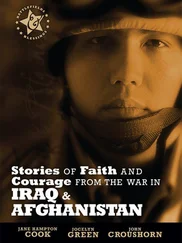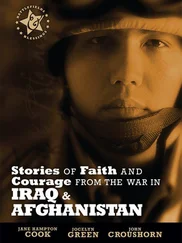Even though so-called ‘protected camps’ have been set up to try and help the victims of the Ugandan conflict, overcrowding and lack of facilities has led to widespread disease and poverty rather than protection from the LRA. There is little support for the victims of gender-based violence due to under-funding and lack of backing from the government.
AN END IN SIGHT
The fact that this conflict has been allowed to continue for 19 years is proof that there has been little positive action to create a lasting peace in Uganda. In October 2005, the International Criminal Court, which is based in The Hague, announced arrest warrants for Joseph Kony and four of his top associates. The charges included mutilation of civilians and the forced abduction of and sexual abuse of children. However, some Ugandans feared that this would only invite further conflict as the LRA members were certain to want avoid facing a trial.
In July 2006, representatives for the LRA took part in a series of peace talks with the Ugandan government in southern Sudan. Joseph Kony was not present at any of the meetings and was believed to be in hiding in the Congo to avoid prosecution for war crimes. The LRA tried to portray themselves as freedom fighters against President Museveni, but their ploy was useless as they had alienated themselves with the Ugandan people through their use of brutal tactics.
It is understandable that the Ugandan government is skeptical of the LRA’s promises, given the fact that it has committed some of the worst humanitarian atrocities in the history of war, with devastating consequences. Nearly two million people have been run out of their homes and forced to live in overcrowded, squalid camps; tens of thousands have died, 30,000 children have been abducted, and hundreds of villages have been destroyed or abandoned.
The current peace talks are the closest the two sides have ever come to reaching a comprehensive agreement and Uganda now needs to know that the UN will be a supportive ally. The need to create incentives for both sides is paramount, so that the foundations can be laid for long-term reconstruction and reconciliation. It is feared that if this latest agreement breaks down, then peace will be a long time in coming to the people of Uganda.
1998–2003

The war that took place between 1998 and 2003 in the Democratic Republic of Congo has been equalled to that of World War II. It is estimated that as many as 3.3 million people died as a result of the war, with the vast majority dying from starvation or disease due to the activities of the complex assortment of armed fighting forces operating in the country. Despite the fact that the Congo is an area rich in natural resources – diamonds, oil, uranium, gold, water, fertile land and exquisite wildlife – it became the object of a conflict that got completely out of hand and was dubbed ‘Africa’s first world war’. Despite the supposed cessation of hostilities in 2003, tensions are still high today.
It is the largest interstate war in the history of Africa and involves nine other African nations, as well as a further 20 armed groups. It is very difficult to understand the reasons for this conflict, due to the fact that there are so many players involved, but an easy way to explain it is that there are nine rebel groups in the Congo who are all fighting to overthrow governments in neighbouring countries. On top of that they all want a part of the region’s riches. The internal conflicts were originally fuelled by ethnic struggles to gain power and riches for people that have never known either. Throughout the years of fighting the Congo became the subject of one of the worst human-rights situations in the world, leaving a trail of carnage, including massacre, rape, child abuse, kidnap and even canibalism.
MASSACRES
Tensions between the Hema and the Lendu tribes, who share fertile land close to the Ugandan border, have existed for many years. About 200 people died in brutal ethnic massacres in the early part of 2001 in the north-east of the Democratic Republic of Congo. After the bloodshed, vehicles went around the town parading severed heads that had been spiked on sticks.
The atrocities were not just limited to these two tribes, however. The Rwandan army and a Kigali-backed rebel groups have also been known to have carried out brutal and systematic massacres.
In May 2002, a massacre was carried out by the Rassemblement Congolais pour la Démocratie-Goma (RCD-G). The RCD relied on the military and political support of neighbouring Rwanda in its control of approximately 40 per cent of eastern Congo. The RCD soldiers entered the civilian neighbourhood of Mangobo and carried out indiscriminate killings of civilians, numerous rapes, beatings and widespread looting. They also arrested a large number of Congolese military and police who they suspected might be involved in a mutiny, which had taken control of the radio station and called for help in tracking down the Rwandans. These officers were executed on the nights of 14 and 15 May on the Tshopo bridge. They were ordered to lie down with their hands bound behind their backs and were then either shot or hacked to death with machetes, or had their throats slit. It is reported that many of the bodies were decapitated before being put into weighted-down plastic sacks and thrown over the side of bridge into the river. Other executions are known to have taken place at an abandoned brewery, the Bangboka Airport and the military barracks at Camp Ketele. Although members of the Human Rights Watch have been unable to identify the RCD officers implicated in these abuses, they stated that what had taken place amounted to war crimes.
Massacres continued throughout the Congo during 2003–2005. US officials are negotiating with Rwanda, Uganda, the Congo and Burundi to try and find a way of dealing with the armed rebel groups. Working in close coordination with the African Union, the EU and the UN, the US hopes to be able to reduce the amount of violence, which is estimated to be taking as many as 1,000 lives each day. Their ultimate goal is to try and bring stability and security back to the people of the Congo, something which they haven’t experienced for a long time.
In April 2003, nearly 1,000 people were massacred in the Ituri region of the Congo. The clashes between the Hema and Lendu tribes started out as a simple dispute over land but have since escalated into a far more volatile situation. When UN investigators were taken to the site of the massacre at Drodro, they saw about 20 mass graves with traces of fresh blood still visible. The victims bore the signs of tribal fighting with slashes from machetes, stab wounds and mutilation.
In May 2003, two rival groups – the Hema and Lendu tribes – fought for control in Ituri’s largest town, Bunia. After the killing spree an eerie calm hung over Bunia, with dead bodies littering the now empty streets. The rebels had left behind their trademark as blood dripped from the machete slashes, the spear thrusts and bullet wounds. Other corpses had started to decay and were being eaten by packs of wild dogs. In the central marketplace, women’s bodies littered the ground and a baby’s body – a grim reminder – lay on the main street. Two priests had been killed while praying inside a church and the remains of a burning corpse lay on the UN compound’s lawn.
The massacre began when the UN withdrew its troops in accordance with a recent peace agreement. The violence had been widely predicted and so it was no surprise when the Lendus took the town of Bunia, forcing 250,000 people to take flight. The remaining 12,000 pressed against the razor wire of the UN compound, screaming, as they tried to escape the machete-wielding militia. Women clutched their babies to their chests as they watched in horror as their families and neighbours were slayed. Many more bodies lay in front of the mud huts, which the militia had smashed to pieces. The death toll was approximately 350 people, and most of the bodies were later buried in simple, unmarked graves.
Читать дальше













